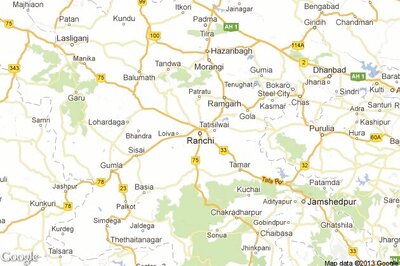
views
A fall in vegetable prices is likely to ease headline inflation and retail inflation to 6.5 per cent and 9.20 per cent respectively in December, Prime Minister's Economic Advisory Council (PMEAC) Chairman C Rangarajan said on Sunday.
"Some of the things that have really pushed up inflation are vegetables like onion prices, which have crashed in December. Therefore when December number comes in mid January, we will see retail inflation coming down by 2-2.5 percentage from the current level of 11 per cent or so. There could be a decline in wholesale price index ... could be the order of 1 percentage," Rangarajan told reporters on the sidelines of the silver jubilee celebration of Indira Gandhi Institute of Development Research.
Wholesale price-based inflation (WPI) accelerated to 14- month high of 7.52 per cent in November, while retail inflation quickened to eight-month high of 11.24 per cent during the month. Going forward, Rangarajan said, the declining trend in inflation will continue and WPI may ease to 6.5 per cent by March-end.
"The RBI has estimated WPI to be around 6.5 per cent by March end. That is the number we are looking at. We will see a decline in December and perhaps it will continue," he said. Quoting an econometric study, the former RBI governor said the threshold inflation level is around six per cent, but there is a need to look at the slightly lower as the level is much higher than what many other countries in the world... advanced countries treat as the acceptable level of inflation.
During his address, Rangarajan said the delay in the completion of the projects had resulted in slow economic growth of India in the last few years. "Economic growth has in fact declined much more steeply than what is warranted by the decline in investment. This may be because projects have not be completed in time or complementary investments have not been forthcoming," he said.
In some of the cases projects were not completed due to non-availability of critical inputs like coal and power. The country's economic growth slumped to a decade low of 5 per cent in the financial year ended March 2013. Rangarajan expects the economic growth during the current fiscal to be around 5 per cent. The PMEAC Chairman said the composition of investment has played a role in the reduction in productivity of capital.
"Nevertheless, while the existing level of investment rate should enable us to grow at 7.5 per cent in the short run, a return to higher level of savings and investment can take us back to the very high levels of growth which we had seen earlier," Rangarajan said.
He said according to several studies, the current account deficit level of 2.5 per cent of the gross domestic product (GDP) is the only sustainable level of CAD, taking into account the normal capital flows. "In fact, even a somewhat lower level of CAD will be desirable," he noted.
Talking about the potential growth rate of 8.5 per cent, Rangarajan said it could be achieved with some pick up in domestic savings rate, narrow current account deficit and sustained level of capital output ratio at around 4:1.
"With modest current account deficit of 2.5 per cent of GDP and a savings rate of 32 per cent of GDP, one can expect the Indian economy to grow at 8.5 per cent," Rangarajan said.




















Comments
0 comment